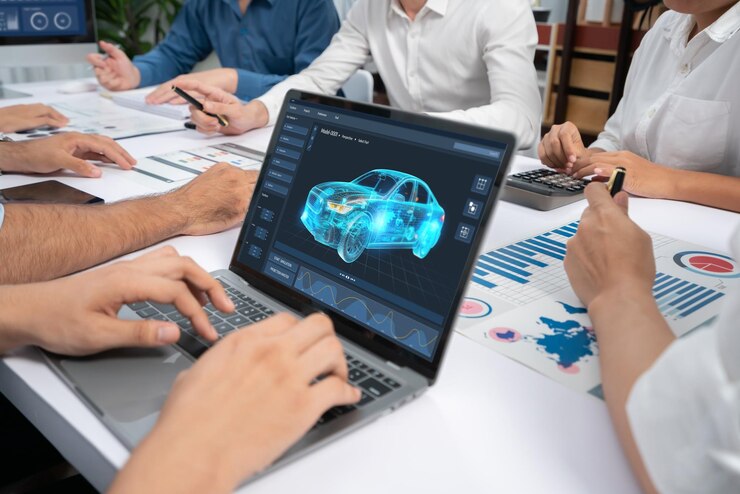The automotive industry is accelerating its shift toward more software-driven vehicles, placing significant emphasis on artificial intelligence (AI), over-the-air (OTA) software updates, and advanced Linux-based safety systems. These technologies promise to transform the driving experience, but automakers and suppliers are grappling with cost pressures and the complexity of integrating new solutions into legacy platforms.
Automakers increasingly view AI as a cornerstone for next-generation vehicle features, such as adaptive cruise control, driver-assistance systems, and predictive maintenance. By leveraging machine learning models trained on vast datasets, manufacturers aim to deliver more responsive safety functions and personalized in-car experiences.
For example, leading OEMs are piloting AI-powered driver-monitoring systems that use real-time video analytics to detect distraction or drowsiness, alerting drivers when attention wanes. This emphasis on AI aligns with broader efforts to create software-defined vehicles, where digital capabilities evolve rapidly via software improvements rather than hardware overhauls.
Parallel to AI developments, over-the-air (OTA) software updates are becoming a critical tool for automakers seeking to keep vehicles current long after they leave the showroom. OTA capabilities enable manufacturers to patch software bugs, introduce new infotainment features, and update safety-critical systems without requiring a dealer visit. Industry consortia like the eSync Alliance have developed secure, multi-vendor OTA platforms that allow automakers and suppliers to collaborate on standardized update protocols. Early adopters have reported significant reductions in recall costs and improved customer satisfaction by delivering seamless, remote updates over cellular networks.
However, expanding OTA functionality is not without challenges. Ensuring updates do not disrupt vehicle systems or compromise cybersecurity demands rigorous testing and certification. The convergence of adaptive and autonomous driving technologies, connectivity, and electric-vehicle platforms creates a labyrinth of software architectures that must remain reliable and secure throughout each over-the-air patch cycle. Smaller suppliers, in particular, face steep learning curves and high testing costs, which can strain profit margins in an already tight market.
Complementing AI and OTA efforts, automakers are also turning to Linux-based operating systems for in-vehicle computing and safety-critical applications. Red Hat recently announced that its In-Vehicle Operating System achieved mixed-criticality functional safety certification, marking a crucial step toward ISO 26262 Automotive Safety Integrity Level B (ASIL-B) compliance.
This certification underscores the viability of open-source Linux platforms for managing both safety-critical tasks—such as airbag deployment logic—and non-critical functions on a single system-on-chip. Industry leaders believe that consolidating multiple functions on a unified Linux foundation can lower hardware costs and simplify software maintenance over a vehicle’s life cycle.
Despite these technical advances, integrating Linux-based systems into existing vehicle architectures remains a complex endeavor. Many current platforms rely on proprietary operating systems and legacy microcontrollers that lack compatibility with modern Linux kernels. Transitioning to a unified Linux stack often entails redesigning electronic control units (ECUs), retraining engineering teams, and revalidating safety and cybersecurity protocols—efforts that can require months of engineering time and substantial investment. For vendors operating on thin margins, these up-front costs can be a daunting barrier to entry.
Cost concerns extend to AI deployment as well. Training and validating AI models for automotive applications demands high-performance computing resources, specialized talent, and long-term data management plans. As vehicle features grow more complex—incorporating natural language processing for voice assistants, computer vision for pedestrian detection, and predictive algorithms for maintenance—the expense of maintaining and updating these models can escalate rapidly. Automakers must weigh these investments against potential gains in safety, customer satisfaction, and over-the-air revenue streams.
To address these hurdles, several automakers are adopting a phased approach: rolling out basic AI and OTA features on new models while gradually migrating to Linux-based platforms in next-generation architectures. This hybrid strategy allows companies to amortize development costs over multiple vehicle generations and provides engineers time to familiarize themselves with open-source safety standards. Meanwhile, industry alliances, including the Connected Vehicle Systems Alliance (COVESA), continue to work on harmonizing hardware and software interfaces to reduce fragmentation in the ecosystem.
In the coming years, experts predict that vehicle architectures will increasingly resemble data centers on wheels, with centralized compute zones running Linux-based safety systems and distributed edge nodes handling sensors and actuators. As the industry progresses toward software-defined vehicles, the ability to deploy AI-driven features and push OTA updates securely will be key differentiators for OEMs. Yet bridging the gap between legacy platforms and modern, open-source solutions will determine how quickly these promising technologies reach the mainstream market.

